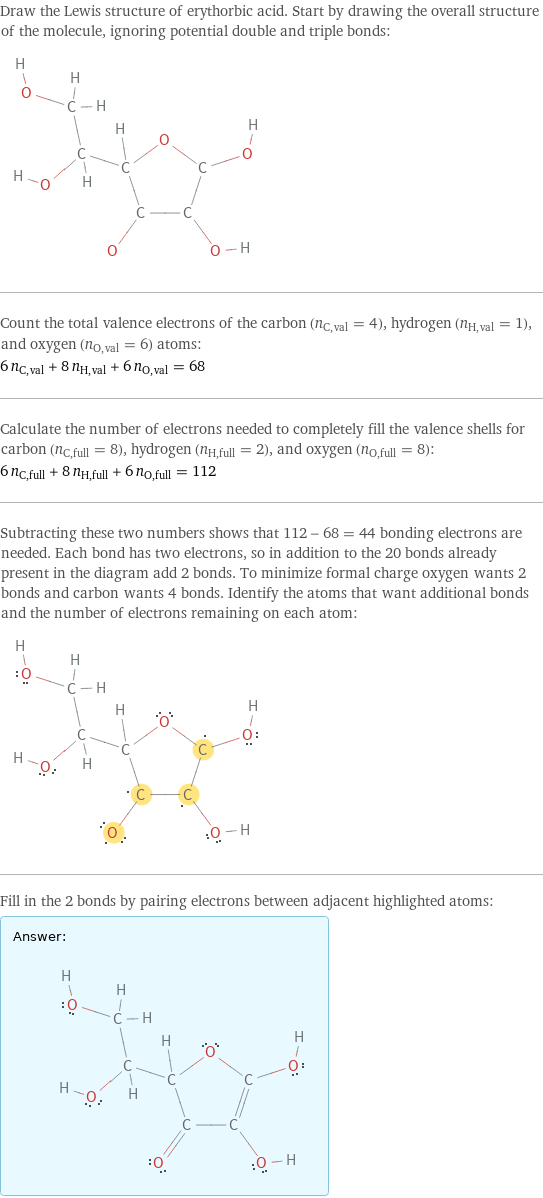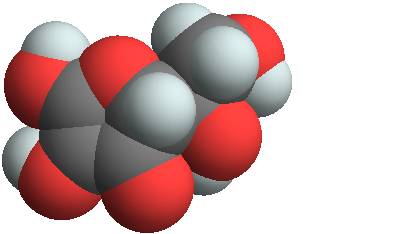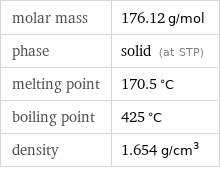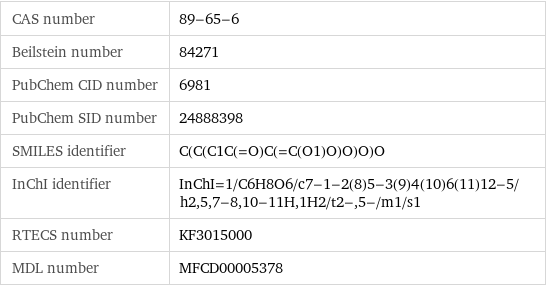Input interpretation

erythorbic acid
Chemical names and formulas
![formula | C_6H_8O_6 name | erythorbic acid IUPAC name | (2R)-2-[(1R)-1, 2-dihydroxyethyl]-4, 5-dihydroxy-3-furanone alternate names | (2R)-2-[(1R)-1, 2-dihydroxyethyl]-4, 5-dihydroxy-furan-3-one | (2R)-2-[(1R)-1, 2-dihydroxyethyl]-4, 5-dihydroxyfuran-3-one | D-araboascorbic acid | D-erythro-hex-2-enoic acidγ-lactone | D-isoascorbic acid | isovitamin C mass fractions | C (carbon) 40.9% | H (hydrogen) 4.58% | O (oxygen) 54.5%](../image_source/eb3c823c599f1cf1ef1b8f68e568ef96.png)
formula | C_6H_8O_6 name | erythorbic acid IUPAC name | (2R)-2-[(1R)-1, 2-dihydroxyethyl]-4, 5-dihydroxy-3-furanone alternate names | (2R)-2-[(1R)-1, 2-dihydroxyethyl]-4, 5-dihydroxy-furan-3-one | (2R)-2-[(1R)-1, 2-dihydroxyethyl]-4, 5-dihydroxyfuran-3-one | D-araboascorbic acid | D-erythro-hex-2-enoic acidγ-lactone | D-isoascorbic acid | isovitamin C mass fractions | C (carbon) 40.9% | H (hydrogen) 4.58% | O (oxygen) 54.5%
Lewis structure

Draw the Lewis structure of erythorbic acid. Start by drawing the overall structure of the molecule, ignoring potential double and triple bonds: Count the total valence electrons of the carbon (n_C, val = 4), hydrogen (n_H, val = 1), and oxygen (n_O, val = 6) atoms: 6 n_C, val + 8 n_H, val + 6 n_O, val = 68 Calculate the number of electrons needed to completely fill the valence shells for carbon (n_C, full = 8), hydrogen (n_H, full = 2), and oxygen (n_O, full = 8): 6 n_C, full + 8 n_H, full + 6 n_O, full = 112 Subtracting these two numbers shows that 112 - 68 = 44 bonding electrons are needed. Each bond has two electrons, so in addition to the 20 bonds already present in the diagram add 2 bonds. To minimize formal charge oxygen wants 2 bonds and carbon wants 4 bonds. Identify the atoms that want additional bonds and the number of electrons remaining on each atom: Fill in the 2 bonds by pairing electrons between adjacent highlighted atoms: Answer: | |
3D structure

3D structure
Basic properties

molar mass | 176.12 g/mol phase | solid (at STP) melting point | 170.5 °C boiling point | 425 °C density | 1.654 g/cm^3
Units

Solid properties (at STP)

density | 1.654 g/cm^3
Units

Chemical identifiers

CAS number | 89-65-6 Beilstein number | 84271 PubChem CID number | 6981 PubChem SID number | 24888398 SMILES identifier | C(C(C1C(=O)C(=C(O1)O)O)O)O InChI identifier | InChI=1/C6H8O6/c7-1-2(8)5-3(9)4(10)6(11)12-5/h2, 5, 7-8, 10-11H, 1H2/t2-, 5-/m1/s1 RTECS number | KF3015000 MDL number | MFCD00005378
NFPA label

NFPA label

NFPA health rating | 1 NFPA fire rating | 0 NFPA reactivity rating | 0
Safety properties

flash point | 169 °C
Toxicity properties

RTECS classes | mutagen